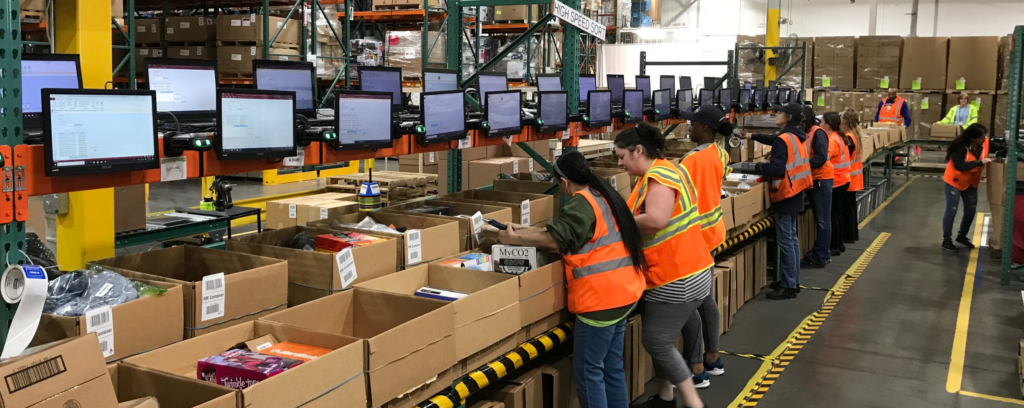Coping With Seasonal Fluctuations
Liquidation Strategies Part IV

Let’s talk about seasonal fluctuations in the volume of returns and excess inventory. What do you do about all that merchandise after the holiday season is over?
For most retailers, the volume of returns will be the highest after the holidays. The secret to dealing with it successfully is to plan before it happens.
1. Review Past Performance
The first step is to review past performance and history to learn whether you performed according to your expectations. What was the impact of seasonality in prior years? Did recovery drop? Were your DCs overflowing with product?
Ask yourself, “Am I still getting maximum recovery? Or am I starting to see fluctuations?” If your recovery is decreasing dramatically during seasonal highs and lows, it’s a good time to think about a liquidation strategy that minimizes the impact of seasonal overstocks and customer returns. Here are a few tips to help you come out on top when dealing with seasonality.
2. Forecast Your Inventory Volume
Suppose your normal liquidation volume is five truckloads per week and you anticipate that, during peak season, it’s going to jump to 15-20 truckloads. Knowing in advance what your peak volume looks like will allow you to plan your liquidation strategy.
We work with clients to create such forecasts ahead of the peak season. If the forecasted seasonal volume is much higher than the non-seasonal volume, we focus on buyer development for that client.
For example, before peak season we identify and negotiate with buyers who can take that much product. In some cases, it might be arranging for the same buyers to accept additional product. Or it might be finding you a pool of new buyers. Pricing negotiation would be based on your last auction closing, using that as the pricing benchmark. (See This Two-Step Strategy Will Boost Recovery)
This strategy avoids a sudden drop in the value of the product—which is what tends to happen when you use auctions as the only tool in your liquidation toolkit. Add offline negotiated sales as an additional channel, however, and you’ll see a difference in your recovery rates.
3. Optimize Sales Velocity
For most major retailers running recurring liquidation programs, there is an established market value for liquidations in the secondary market. Professional secondary market buyers know what your liquidation truckload usually sells for.
History often determines value. When you suddenly increase the liquidation volume during the peak season, your price plummets and that price defines a new, lower benchmark. As you increase supply, your price decreases. Unfortunately, bringing the price back up can take a long time. Buyers have long memories and know how much your truckload sold for last time. Often, they are not willing to pay more than that.
So how do you prepare for that scenario without impacting your recovery rates? At Liquidity Services, even before peak season, we start planning. We assess how much additional product can be absorbed by the auction marketplace and how much more should be absorbed through offline negotiated sales. We then will recommend a multichannel strategy that allows you to maximize recovery without flooding the marketplace with unwanted product. By planning for seasonal peaks early, we can help you minimize the impact to your bottom line.
4. Focus on Total Recovery Value
Factor in transportation costs, warehouse costs and commissions to get the real recovery rate. Whether you’re a small or large retailer or manufacturer, we recommend that you avoid focusing solely on short-term recovery for excess inventory and returns. Focus on your total recovery value – not just the immediate return from the auction or the negotiated sale.
To help you develop a long-term reverse logistics liquidation strategy, choose a partner that offers more than one selling solution, with the expertise to help you in different ways at different times. Even if you don’t need all the different channels and solutions right now, it will give you flexibility down the road. For example, even if you’re not quite big enough to need negotiated sales yet … you’ll have that option available to you as you grow. In fact, over 30% of our customers choose offline negotiated sales as a primary channel to augment the auction marketplace and improve their recovery rates.
At Liquidity Services, we automatically assign an account manager—a dedicated expert—to watch over your account. We begin with the auction marketplace and when we see fluctuations, or even the possibility of one, your account manager will reach out to you to suggest alternatives, so you won’t get caught by surprise during peak season (or pandemics).
Remember, the secret is advance planning. When you plan ahead, focus on total recovery value, and use multiple channels to disposition product, you significantly decrease the need for damage control when a seasonal spike hits.
As we gear up for the coming holiday season, the time to plan is now. Get in touch today before excess and customer returns overwhelm your DCs and your staff. We have the space, the infrastructure, and the experience to minimize your losses and maximize your recovery … even at the busiest times of the year.
To take your advance planning to the next level, and see how your colleagues are handling their reverse logistics challenges, download our benchmarking research survey, Recovery & Efficiency: Are Retailers Positioned for Reverse Logistics Success?



Comments are closed.